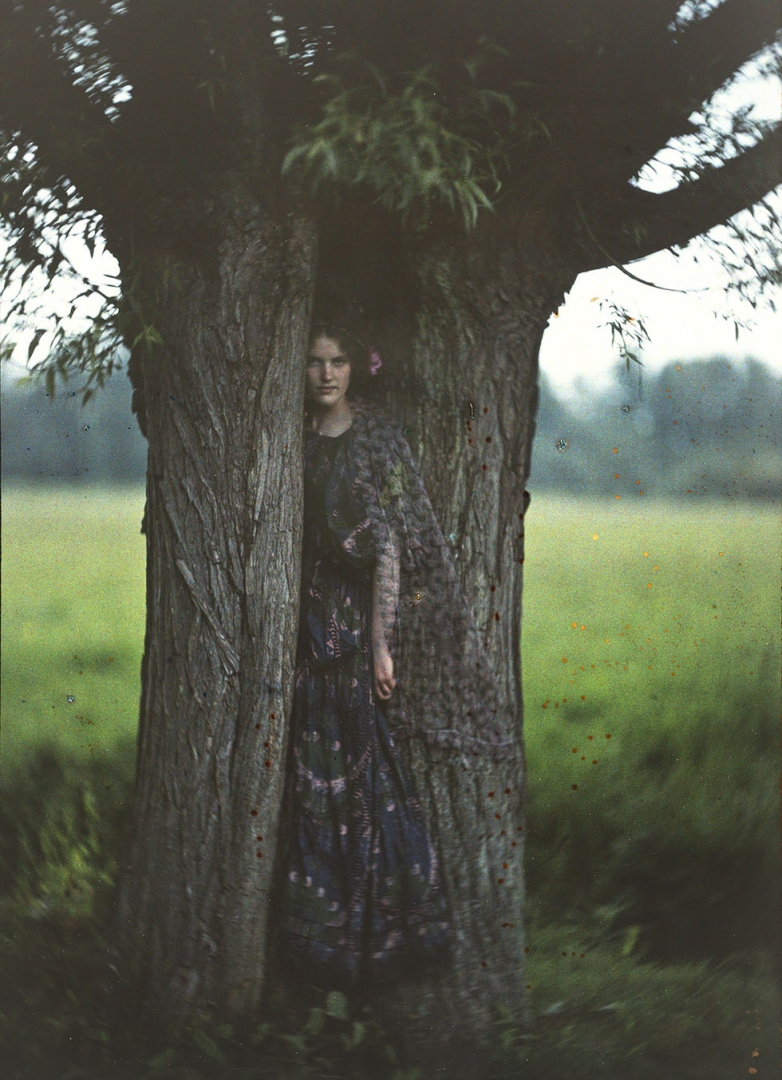The technology was long-awaited by photography enthusiasts of the time who saw the world around them come to life and gain depth and new dimensions. The autochrome plate required a lot of light, while the shade of red came out particularly well in the pictures. Hence the eternal summer and the penchant for colorful dresses, flamboyant roses and still lifes with shiny apples.
From its launch in 1907 until 1935, when autochrome plates were driven out of the market by the far cheaper and more convenient Kodachrome film, the world endured severe hardships with the horrors of World War I, the mass deaths of the Spanish flu, and the 1930s financial crisis and depression. But very little of this can be seen in the images preserved in the Victoria and Albert Museum’s collection.
So it was also the privileged Western men of the time who stood behind the camera. A protected social class with plenty of time for artistic interests and travel. While many professional photographers stuck to the more practical black and white photography, the autochrome plates were the great love of amateurs and family photographers.
Children and wives were used as models, and the close relationships are reflected in the motifs, which are often warmly and lustily composed. Out in the sun they dragged everything colorful they came across and draped themselves in red fabrics, reveled in flowers and played with references to literature and the theatrical poses of the portrait painters. Many of the images were intended for private use and the technique was generally ill-suited for exposure in public contexts due to its extreme sensitivity.
Hanging the pictures on the wall is not possible, the motifs are quickly destroyed in daylight and are best seen in the dark dimly lit from behind. As it happens, relatively few photographs from the heyday of autochrome technology survive, but via a transfer from The Royal Photographic Society in 2017, 2,500 of them are part of the Victoria and Albert Museum’s collection. A selection of these rarities have been made available to a new audience through digitization and reproductions.
Based on the collection, Landskrona Foto has created the current exhibition, where we get close to the photographers and their families. Before our eyes, the early 20th century is brought to life in soft pixels taken from a romantic Instagram filter. What appears to be digital noise is actually blue, green and red grains of potato flour which, when light is filtered through them, reproduce the motif in reverse form on the silver plate. People and environments that were otherwise irretrievably gone appear, intensely alive again.




